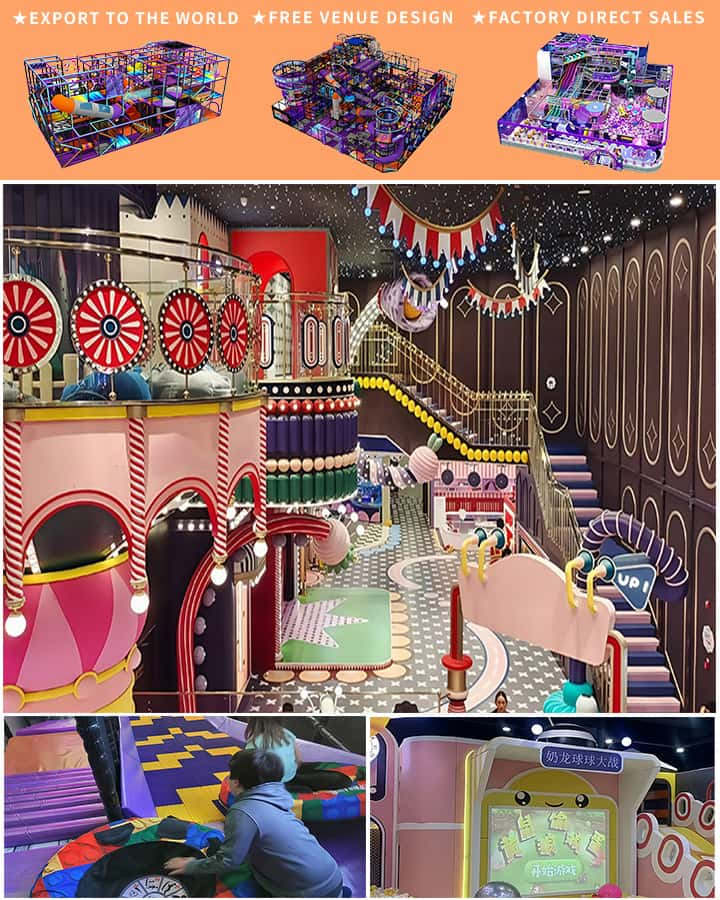When the weather outside is uninviting, or you simply want a safe and controlled environment for your children’s playtime, an indoor playground can be a game-changer. Creating this space requires thoughtful planning, creativity, and a focus on safety and fun. Here’s a comprehensive guide to help you design an engaging indoor playground for children that will keep them entertained and active all year round.
1. Choose the Right Space
The first step in crafting an indoor playground is selecting an appropriate space within your home. Consider areas like basements, attics, living rooms, or even dedicated playrooms. Ensure the area is large enough to accommodate the various types of equipment you plan to install without overcrowding. Adequate ceiling height is also crucial if you intend to include climbing structures or tall slides.
2. Safety First
Safety is paramount when designing an indoor playground. Use non-toxic materials that are durable yet soft enough to prevent injuries from falls. Carpeted flooring with foam underlay provides a cushioned landing surface. Make sure all equipment is stable and has no sharp edges. For added protection, consider installing padded mats around the perimeter of the play area.
3. Types of Equipment
A well-rounded indoor playground should include a variety of equipment to engage children of different ages and interests. Here are some essential components:

- Climbing Structures: Walls, ropes, and ladders provide excellent opportunities for physical activity and developing motor skills.
- Slides: A smooth, gentle slide can offer endless fun and encourage movement.
- Trampoline: An indoor trampoline can be a great source of exercise and joy but must be securely installed and accompanied by safety netting.
- Tunnels and Obstacle Courses: These elements can stimulate imagination and problem-solving skills.
- Interactive Toys: Incorporate toys that promote creativity, such as building blocks, puzzles, or interactive electronic games.
4. Age Appropriateness
Tailor the playground to suit the age range of the children who will be using it. Younger children benefit from sensory-rich environments with colorful objects and simple, safe structures. Older kids might enjoy more complex setups that challenge their dexterity and strength, such as rock climbing walls or multi-level platforms.
5. Design Themes
Adding a theme to your indoor playground can elevate the experience and make it even more enchanting. Ideas include:
- Adventure Land: Featuring jungle themes with faux trees, animal cutouts, and vines.
- Space Odyssey: Decorated with stars, planets, and spaceship motifs, perfect for inspiring interstellar imagination.
- Fairy Tale Kingdom: Castles, dragon figures, and magical elements can create a whimsical atmosphere.
6. Lighting and Ventilation
Good lighting is key to maintaining visibility and ensuring safety during playtime. Use bright, natural light where possible, supplemented with child-friendly, energy-efficient bulbs. Proper ventilation is also important to keep the air fresh and maintain a comfortable temperature.
7. Easy Maintenance
Choose materials and equipment that are easy to clean and maintain. Machine-washable mats, washable climbing fabrics, and dust-resistant toys can save time and effort in keeping your indoor playground tidy.
8. Personal Touches
Finally, make the indoor playground uniquely yours by adding personal touches such as family photos, custom decorations, or handmade crafts. These elements can make the space feel more inviting and special for the children.
In conclusion, creating an indoor playground for children involves a blend of safety, functionality, and imaginative design. By carefully selecting the right space, incorporating diverse and age-appropriate equipment, and adding thematic details, you can create a delightful haven where your children can play, learn, and grow regardless of the weather outside.




